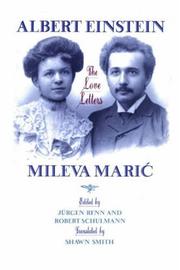| Listing 1 - 2 of 2 |
Sort by
|
Book
ISBN: 0814739121 081478710X 9780814787106 9780814739129 9780814791325 0814791328 9780814791332 0814791336 Year: 2010 Publisher: New York, NY
Abstract | Keywords | Export | Availability | Bookmark
 Loading...
Loading...Choose an application
- Reference Manager
- EndNote
- RefWorks (Direct export to RefWorks)
Arkansas, 1943. The Deep South during the heart of Jim Crow-era segregation. A Japanese-American person boards a bus, and immediately is faced with a dilemma. Not white. Not black. Where to sit?By elucidating the experience of interstitial ethnic groups such as Mexican, Asian, and Native Americans—groups that are held to be neither black nor white—Leslie Bow explores how the color line accommodated—or refused to accommodate—“other” ethnicities within a binary racial system. Analyzing pre- and post-1954 American literature, film, autobiography, government documents, ethnography, photographs, and popular culture, Bow investigates the ways in which racially “in-between” people and communities were brought to heel within the South’s prevailing cultural logic, while locating the interstitial as a site of cultural anxiety and negotiation.Spanning the pre- to the post- segregation eras, Partly Colored traces the compelling history of “third race” individuals in the U.S. South, and in the process forces us to contend with the multiracial panorama that constitutes American culture and history.
Segregation --- Asian Americans --- Desegregation --- Race discrimination --- Minorities --- Asians --- Ethnology --- Race identity --- Southern States --- Race relations. --- 1943. --- Americans. --- Arkansas. --- Asian. --- Crow-era. --- Deep. --- Japanese-American. --- Leslie. --- Mexican. --- Native. --- South. --- Where. --- accommodate. --- accommodated. --- binary. --- black. --- boards. --- bus. --- color. --- dilemma. --- during. --- elucidating. --- ethnic. --- ethnicities. --- experience. --- explores. --- faced. --- groups. --- heart. --- held. --- immediately. --- interstitial. --- line. --- neither. --- other. --- person. --- racial. --- refused. --- segregation. --- sit. --- such. --- system. --- that. --- white. --- with. --- within.

ISBN: 0691088861 0691215030 Year: 2001 Publisher: Oxford : Baltimore, Md. : Princeton University Press, Project MUSE,
Abstract | Keywords | Export | Availability | Bookmark
 Loading...
Loading...Choose an application
- Reference Manager
- EndNote
- RefWorks (Direct export to RefWorks)
In 1903, despite the vehement objections of his parents, Albert Einstein married Mileva Maric, the companion, colleague, and confidante whose influence on his most creative years has given rise to much speculation. Beginning in 1897, after Einstein and Maric met as students at the Swiss Federal Polytechnic, and ending shortly after their marriage, these fifty-four love letters offer a rare glimpse into Einstein's relationship with his first wife while shedding light on his intellectual development in the period before the annus mirabilis of 1905. Unlike the picture of Einstein the lone, isolated thinker of Princeton, he appears here both as the burgeoning enfant terrible of science and as an amorous young man beset, along with his fiance, by financial and personal struggles--among them the illegitimate birth of their daughter, whose existence is known only by these letters. Describing his conflicts with professors and other scientists, his arguments with his mother over Maric, and his difficulty obtaining an academic position after graduation, the letters enable us to reconstruct the youthful Einstein with an unprecedented immediacy. His love for Maric, whom he describes as "a creature who is my equal, and who is as strong and independent as I am," brings forth his serious as well as playful, often theatrical nature. After their marriage, however, Maric becomes less his intellectual companion, and, failing to acquire a teaching certificate, she subordinates her professional goals to his. In the final letters Einstein has obtained a position at the Swiss Patent Office and mentions their daughter one last time to his wife in Hungary, where she is assumed to have placed the girl in the care of relatives. Informative, entertaining, and often very moving, this collection of letters captures for scientists and general readers alike a little known yet crucial period in Einstein's life.
Physicists. --- Physicists --- Correspondence. --- Einstein-Marić, Mileva, --- Einstein, Albert, --- Physical scientists --- Annalen. --- Assistent. --- Brownian Motion. --- Diplomarbeit. --- Einstein to Marić. --- God. --- Letter. --- Mileva. --- Paradise. --- Privatdozenten. --- Schopenhauer. --- Zurich. --- ad infinit. --- ad oculos. --- annus mirabilis. --- atomism. --- biographers. --- calculus. --- darling. --- difficulty. --- engineering. --- formulation. --- horribile dictu. --- imagination. --- immediately. --- musical successes. --- mésalliance. --- native. --- physiologists. --- recommendation. --- self-confidence. --- sweetheart. --- vocabulary.
| Listing 1 - 2 of 2 |
Sort by
|

 Search
Search Feedback
Feedback About UniCat
About UniCat  Help
Help News
News